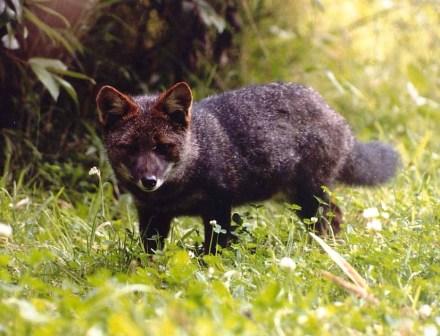Darwin’s fox or Darwin’s Zorro (Lycalopex fulvipes) is a small critically endangered canine from the genus Lycalopex. It is also known as the Zorro Chilote or Zorro de Darwin[2] in Spanish and lives on Nahuelbuta National Park, (Araucanía Region), the Valdivian Coastal Range (Los Ríos Region) in mainland Chile and Chiloé Island.[3]
Darwin’s fox was first collected from San Pedro Island off the coast of Chile by the naturalist Charles Darwin in 1834. It was long held that Darwin’s fox was a subspecies of the South American gray fox (L. griseus); however, the discovery of a small population of Darwin’s fox on the mainland in Nahuelbuta National Park in 1990[4] and subsequent genetic analysis has clarified the fox’s status as a unique species.[5] In 2012 and 2013 the presence of the Darwin’s fox at Oncol Park, Alerce Costero National Park and the Valdivian Coastal Reserve was confirmed through camera trapping.[3]
It is believed that there are only 250 Darwin’s foxes on Chiloé Island and up to 70 on the mainland, and they are listed as critically endangered by the World Conservation Union.[2] Fragmentation of forest adjacent to the national park and on the island is a concern for their conservation, and feral dogs may pose the greatest threat to their survival by spreading disease or directly attacking. Persecution by people who think that the foxes attack domestic fowls, though they pose little threat, is also a potential problem.
(From Wikipedia, April 2015)





